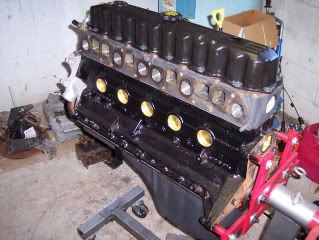Instead of my usual long detailed preamble explaining all the mind numbing data harvesting and analysis I did to figure this out. I'm just stating it out front for anyone interested in the lowdown; but who just isn't as geeked up about the subject as I am. If you're wondering what a UOA is and how in the world I came up with these numbers keep reading, after the colorful pictures
First the numbers

The Above are straight averages, in others words total wear metal numbers for each type of metal (in PPM) divided by the number UOA's irregardless of average miles per UOA. Below are adjusted averages, where the number of samples was balanced to arrive at a similar amount of miles per UOA (throwing out the highest and lowest mileage samples) then dividing the wear metals by the number of samples.

These two show you a gross average of what each UOA looked like. I tried running the metals divided by only mileage but had a hard time coming up with meaningful numbers dividing hundreds of thousands of miles into a couple hundred parts per million (no math wiz here that's for sure).
The opinion I've formed is that there's no sense in running 40w oils. lighter 30w's will improve power and gas mileage slightly. And from the looks of things will provide the same level of protection, they will get to parts quicker on cold starts and they will stay on parts longer when parked. This may be reflected in the slightly higher bearing metals seen in the 40w column (copper and lead).
I really thought I was going to find a significant deviation from one weight to the other, but these numbers are small enough to be called insignificant. If anything, 30 weights might be showing a tiny edge in performance over the heavier oil. One thing is clear, neither oil significantly lowers Iron wear over the other.
This started off as an attempt to study ZDDP and Oil weight as it effects our 4.0's and strokers. By surveying published UOA's (Used Oil Analysis) from BITOG (BobIsTheOilGuy.com). I started searching there last year and compiled all the UOA's I could find into Excel; that involved strictly the Jeep Inline 6. It took some serious carpal tunnel inducing search marathons to dig up every reference to Jeep inline 6's I could find that involved someone posting their UOA. This involved hundreds of thousands of miles of oil changes (317,778) from a crap load of UOA's, spanning 5 years of the BITOG forum (that's as far back as you can search). Included is just about every viscosity of 30w 0W30 on up to 10W30 and 0w40 on up to 15W40.
I threw out any UOA's showing obvious signs of shot bearings. Or new engines that were obviously showing massive break in metals. This comprised at least a dozen or more UOA's showing abnormally high levels of copper and lead. At least two UOA's thrown out due to either a cracked 0331 head or a blown HG (extremely high levels of coolant cantaminating the oil). A few dozen were weeded out due to unintelligible formatting or for lacking all important info like miles on the oil, or viscosity, or exactly what engine the Jeep had. I also didn't use any info from the 4 banger UOA's... they have 2 less cylinders thus their wear metal numbers will be lower. I didn't feel that mutiplying by a 3rd would be accurate.
One bit of errata Mobil 1 (straight Super Syn M1) consistently shows higher levels of Iron than any other Oil... regardless of viscosity. I have two theorys here: straight M1 is a PAO ester based synthetic (as I understand it) esters are extremely good solvents... the esters melt away trapped sludge and grime more so than other oils releasing trapped wear metals. There's some creadence to this, as there are actual expensive Engine treatment systems (AutoRX) that use pure esters to clean out neglected engines. Or #2 M1 also consistently shows lower Phos and Zinc (ZDDP) levels sometimes lower than even current API low ZDDP oils. Which could lead to more valve train wear.
I am a fan of M1, but I use High Mileage which has very good Phos and Zinc levels (old SJ spec) but I am planing on sending out a sample to Blackstone of my current fill (10W40 M1 High Mileage) to see if I don't need to re-evaluate my choosen oil. One thing I'm pretty sure of, I will be going to a 30w next change. Whether it will be M1 High Mileage 10W30 or not is the question. But that's pretty much the only game in town for a high ZDDP off the shelf high quality oil that is also a 30 weight... (oh and not a racing oil)
Maybe that's a different subject entirely but When you've looked at as many UOA's as I needed to to put these numbers together, there's VERY few oils that have zinc and Phosphorus levels above the 10% (1000PPM) target. Even in 2003 there were almost NO oils left that were still in the right ballpark.
No real 20w UOA's were found, and no 15W50 UOA's...
Deisel grade Oils (Delvac and Rottela) did not jump out at me as having better wear numbers. Just as low ZDDP and high ZDDP haven't immediately jumped out at me for better or worse wear numbers. I will have to crunch those numbers, but I expect nothing shocking or particularly enlightening, if only because the 40w's on average have better ZDDP (due almost entirely to the Diesel oils all being 40 weight) but not apparently better wear numbers.
Still At some point I will correlate all these UOA's against ZDDP levels and see if there are any significant trends. Look for that post here later.






